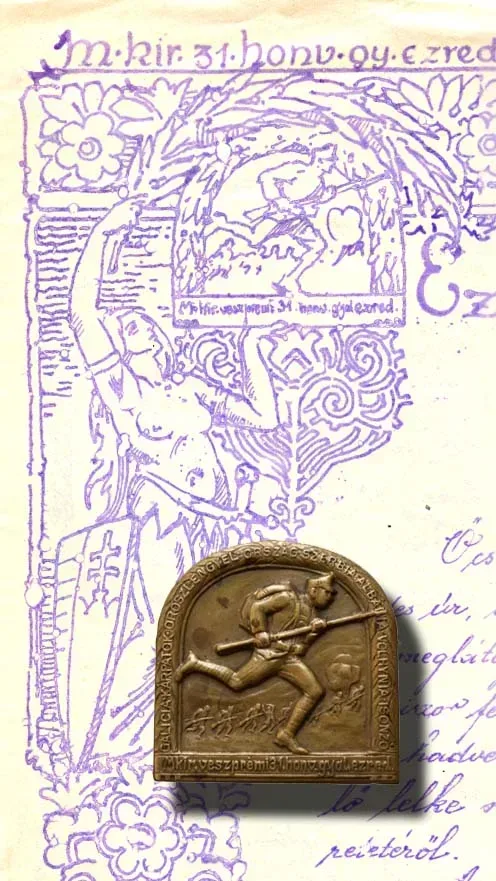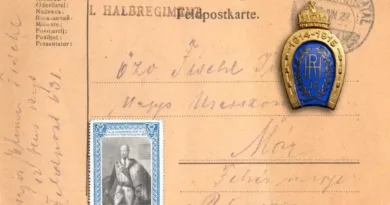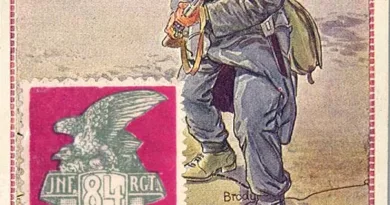31st Honvéd IR
The focus of this post is not on a real postcard, but on a stenciled page with a badge on it. In today’s world, the reproduction techniques of the paper-based world are slowly being completely forgotten. Of course, the printing technology, the rotary printing machines, still work, but the technologies of the products produced in smaller numbers have been completely replaced by electronic applications. Slowly, we don’t use a copier anymore, but rather scan. Not to mention electronic mailers. During the Great War, the most common method of reproduction, which did not yet require a printing background, was stenciling. We are interested in this now because the presented sheet, decorated with a cap badge, a regiment command, has been reproduced with this technology.
The stenciled sheet itself is the daily command of the commander of the 31st Honvéd Infantry Regiment. I am making an entry about it to show how widely the badges have been used. The badge became one of the symbols of the regiment, almost like the regiment number itself. Among the postcards, camp newspapers, and other paper-based products decorated with the motif of badges, even the regimental order appears.

The 31st Infantry Regiment was the home regiment of Veszprém. The badge depicting the onslaught of the private could have been made early 1917 based on the list of battlefields. There is another badge with slightly different form, but with the same motif, already showing the battlefields of 1917. The daily order was made with Art Nouveau frame decoration to suit the tastes of the age. Hungaria, in this slightly frivolous, fluffy dress, raises the sign showing the motif of the regimental badge.

The main motif on the regiment’s Veszprém monument is the elongated, second badge.




